

|
 |
Lust in the Dust
R2 - United Kingdom - Arrow Films Review written by and copyright: Paul Lewis (13th December 2013). |
|
The Film
 Lust in the Dust (Paul Bartel, 1985) 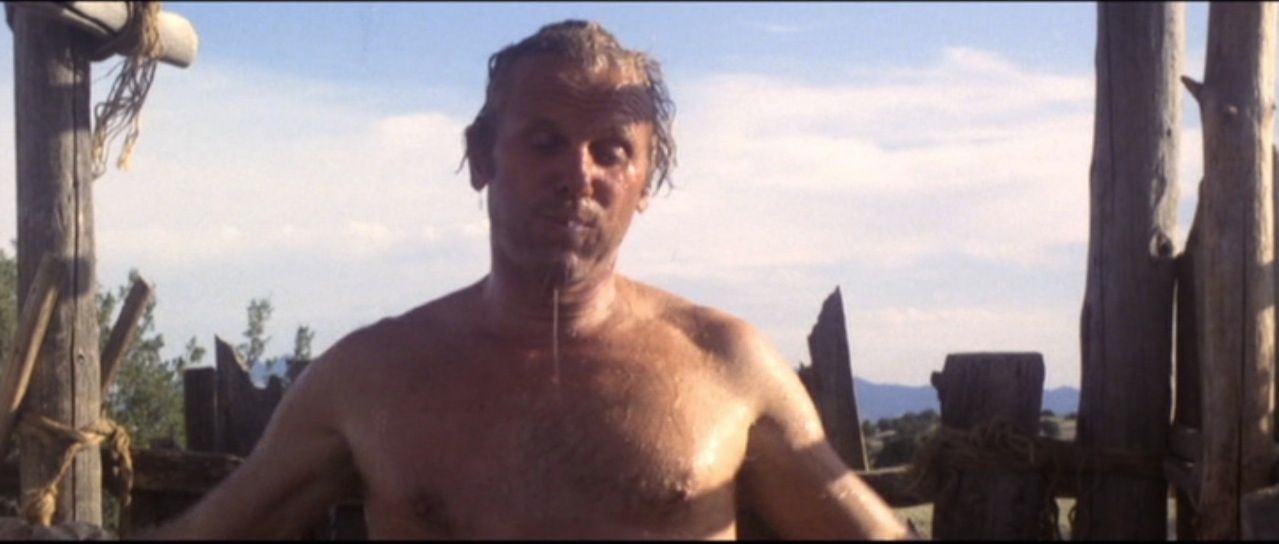 I tend to avoid using personal anecdotes in my reviews, but given that Lust in the Dust is such a juvenile, scattershot film, a personal, subjective approach seems to be appropriate within this context. As a young man in the early 1990s, I remember vividly arguing with one of my friends about the existence of this film. My friend insisted that no film with the title Lust in the Dust existed, and that the name had only been applied as a derogatory nickname for King Vidor’s Duel in the Sun (1946) – granted by that film’s star, Gregory Peck. However, I was absolutely certain that this film, which had a brief cinema release in the UK that was followed by a short-lived shelf life on VHS, was in existence. However, having only seen it once, I could recall very little about it. Of course, nowadays debates such as this may be easily settled by a quick Internet search, and the digital home video era has given extra life to films that may otherwise have become naught but ‘rust in the dust’. After many years it’s interesting to see this film finally resurrected on home video in the UK; and, revisiting Lust in the Dust after having only previously seen it once, more than twenty years ago, via what must have been a panned-and-scanned videocassette presentation, I was surprised to realise that this cheap, independent parody of the Western genre – and, more specifically, the Italian Westerns of the 1960s and 1970s – was shot (quite well, I might add) in expansive ‘scope. I tend to avoid using personal anecdotes in my reviews, but given that Lust in the Dust is such a juvenile, scattershot film, a personal, subjective approach seems to be appropriate within this context. As a young man in the early 1990s, I remember vividly arguing with one of my friends about the existence of this film. My friend insisted that no film with the title Lust in the Dust existed, and that the name had only been applied as a derogatory nickname for King Vidor’s Duel in the Sun (1946) – granted by that film’s star, Gregory Peck. However, I was absolutely certain that this film, which had a brief cinema release in the UK that was followed by a short-lived shelf life on VHS, was in existence. However, having only seen it once, I could recall very little about it. Of course, nowadays debates such as this may be easily settled by a quick Internet search, and the digital home video era has given extra life to films that may otherwise have become naught but ‘rust in the dust’. After many years it’s interesting to see this film finally resurrected on home video in the UK; and, revisiting Lust in the Dust after having only previously seen it once, more than twenty years ago, via what must have been a panned-and-scanned videocassette presentation, I was surprised to realise that this cheap, independent parody of the Western genre – and, more specifically, the Italian Westerns of the 1960s and 1970s – was shot (quite well, I might add) in expansive ‘scope.
Set in 1884, Lust in the Dust opens with Rosie Velez (Divine) wandering through the barren New Mexico landscape on her mule. When the creature throws her, the contents of her water flask spilling across the sand, Velez cries out, ‘My gin! Oh, God, I’ll die of thirst out here’. Continuing her journey on foot, Velez comes across an oasis. She strips and wades into the water. However, she is watched by a mysterious, silent stranger, Abel Wood (Tab Hunter). ‘What do you want?’, Velez demands: ‘It’s me, isn’t it? You’re going to take advantage of me… you’re going to have your filthy way with me under the hot desert sun, aren’t you? You’re going to ravish me like I’ve never been ravished before, your hot sweat sliding over me as we roll in the dust. Oh, as you violate my innermost parts, as you pound against me in the most animalistic orgasmic passion… My God, you’re disgusting’. As Wood turns to leave, still having not uttered a word, Velez pleads with him to stay. She gathers her belongings and follows him. 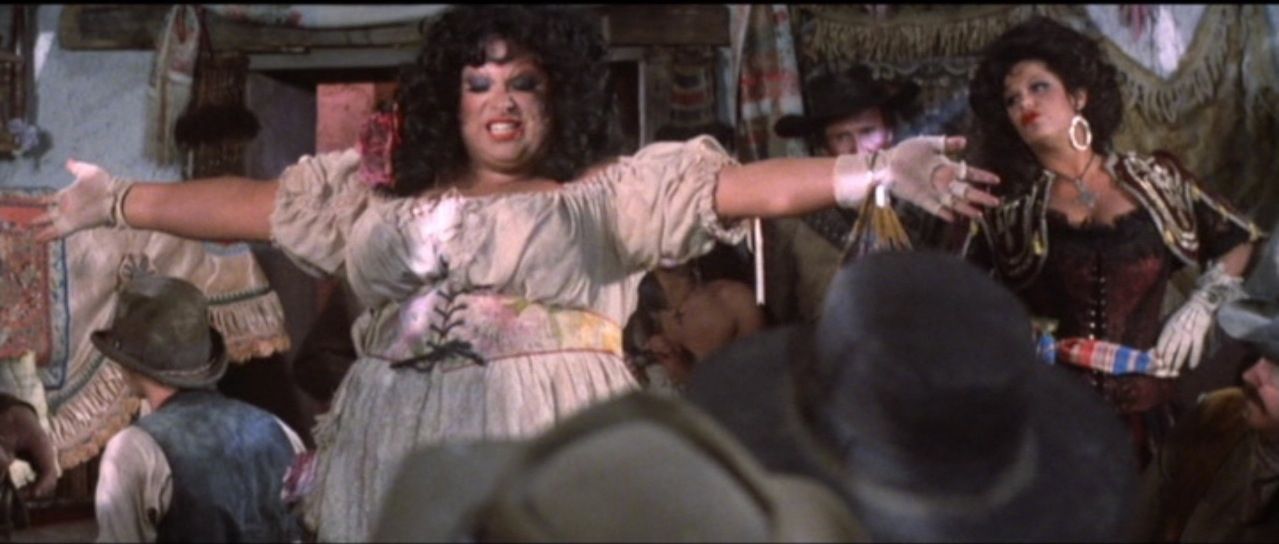 Both Velez and Wood are heading to the same town: Chili Verde. As they travel together, Velez reflects on the circumstances which led to her encounter with Hard Case Wiliams (Geoffrey Lewis) and his ragtag band of outlaws. Having ‘received the education of a Boston preacher’, Williams is not averse to quoting scripture. His gang’s encounter with Velez leads to Williams’ assertion that ‘my men are horny as jackrabbits’. Velez pleads with Williams, telling him she is a virgin. ‘That does make a difference’, Williams responds: ‘Then I’ll go first’. However, rather than resisting the men, Velez proves to be insatiable and accidentally kills one of Williams’ gang by accidentally crushing his neck between her thighs, facilitating her escape. Both Velez and Wood are heading to the same town: Chili Verde. As they travel together, Velez reflects on the circumstances which led to her encounter with Hard Case Wiliams (Geoffrey Lewis) and his ragtag band of outlaws. Having ‘received the education of a Boston preacher’, Williams is not averse to quoting scripture. His gang’s encounter with Velez leads to Williams’ assertion that ‘my men are horny as jackrabbits’. Velez pleads with Williams, telling him she is a virgin. ‘That does make a difference’, Williams responds: ‘Then I’ll go first’. However, rather than resisting the men, Velez proves to be insatiable and accidentally kills one of Williams’ gang by accidentally crushing his neck between her thighs, facilitating her escape.
Wood and Velez arrive at Chili Verde. The town is almost deserted. However, they soon discover that the townsfolk are simply hiding from the strangers. The town is dominated by Bernardo (Henry Silva) and his gang, who hold Wood at gunpoint until the scene is interrupted by the saloon owner, Marguerite (Lainie Kazan). She rousts Bernardo from the saloon. However, Bernardo soon convinces some of the other townsfolk that Wood is seeking the gold that is rumoured to have been hidden near the town by an outlaw; he orchestrates the lynching of Wood, who escapes after a mysterious member of the community shoots the rope from around his neck. Wood returns to the town and shoots Bernardo dead. Talking with the town priest, Father Garcia (Cesar Romero), Wood learns of the gold. (‘The legend of the gold keeps us alive. That is why we are all here. These are ruthless men… and women’, Garcia informs Wood.) Garcia tells Wood that the secret of the gold lies in a limerick: ‘There was a young fellow from Scotland / Who robbed the New Mexico hotland / In a grave situation / Two butes his salvation / He buried the gold / But in what land?’ When Williams and his gang ride into town, also in search of the gold, the stage is set for a confrontation between Wood, Velez, Marguerite and Williams. Where Vidor’s Duel in the Sun, whose nickname Bartel nicks for his film’s name, was a psychosexual Western, Bartel’s film is essentially a bedroom farce with Western dressing and a sprinkling of utterly tasteless rape jokes as a side dish – jokes that were ridiculously outdated when the film was first released in 1985. It’s tempting, although perhaps a little generous, to read Lust in the Dust’s depiction of Velez’s pleading with (firstly, Wood and secondly, Hard Case Williams’ gang) not to rape her before encouraging her own sexual assault as an ironic commentary on the undeniably misogynistic depiction of sexual violence in Hollywood Westerns of the 1960s and 1970s – in films such as High Plains Drifter (Clint Eastwood, 1973), where rape is shown as an act in which the victim is either compliant or complicit; or in William Graham’s Waterhole #3 (1967), where sexual assault is defined ‘comically’ by James Coburn’s character as ‘assault with a friendly weapon’. The casting of Divine suggests that the film’s perspective on Rosie’s ambiguous attitude towards rape was intended to be understood ironically. However, had the role of Rosie been played by a female actor rather than drag queen Divine it’s hard to imagine the BBFC of the mid-1980s being so lenient towards these sequences as to pass the film uncut. Certainly, some viewers will find these sequences a little unsettling – but perhaps that’s the point. Then again, it probably isn’t. 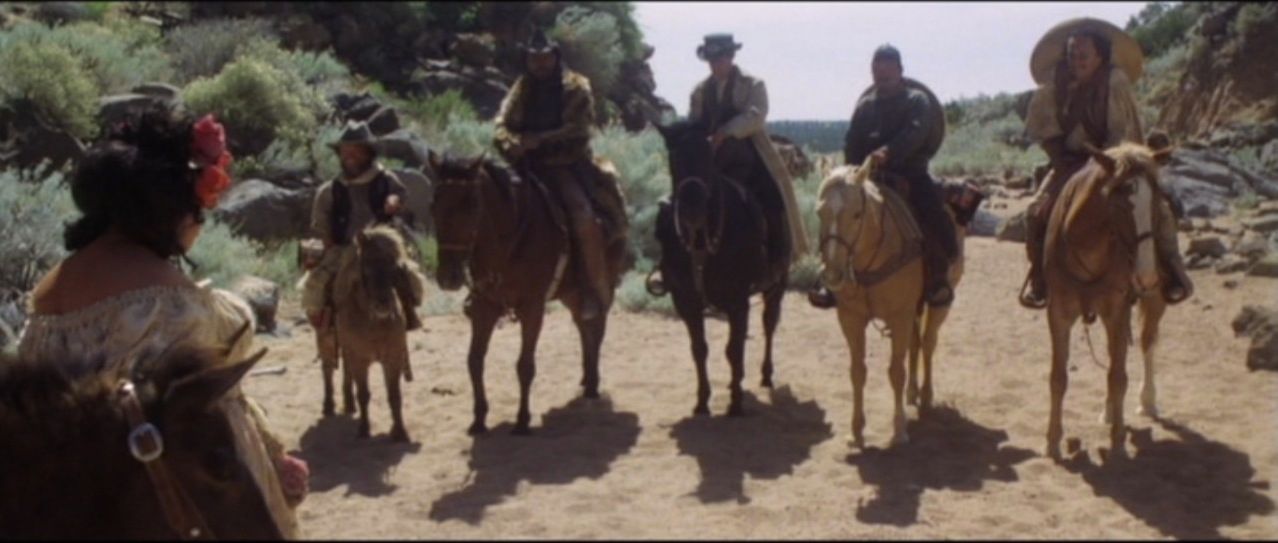 Lust in the Dust was written by Tab Hunter whilst touring in various theatre productions (see Picano, 2005: 79). Hunter’s original script carried the title The Reverend and Rosie; and according to Hunter, his partner Allan Glaser ‘single-handedly raised the financing’ for the picture (Hunter, quoted in ibid.). As noted above, at its heart the film is essentially a bedroom farce, with Wood finding himself to be an irresistible object of desire – firstly, by Rosie, then by Marguerite and, briefly, saloon girl Ninfa (Gina Gallego). As in most bedroom farces, much bed-hopping ensues: Marguerite seduces Wood in the makeshift shower outside her saloon, whilst Velez, who in the flashback to her encounter with Hard Case Williams’ gang has already been shown to accidentally kill any man that performs cunnilingus on her, is visited in her room by Richard Parker (‘I’m Richard Parker. Most people around here call me “Red Dick” on account of my hair’). Inevitable, Velez accidentally beaks Red Dick’s neck too – a throwaway incident which, frustratingly, has little follow-through in the script and seems like a joke in search of a punchline. In another sequence that underscores the film’s relationship with the world of the bedroom farce, Wood visits Father Garcia after he has been seduced by Marguerite. ‘Bless me father, for I have sinned’, Wood says. Garcia rolls his eyes and mutters, ‘Marguerite’. The film then cross-cuts between Wood’s confession and another scene, returning to the scene of Wood and Garcia to reveal Wood giving the increasingly agitated priest a protracted laundry list of his sexual encounters. Lust in the Dust was written by Tab Hunter whilst touring in various theatre productions (see Picano, 2005: 79). Hunter’s original script carried the title The Reverend and Rosie; and according to Hunter, his partner Allan Glaser ‘single-handedly raised the financing’ for the picture (Hunter, quoted in ibid.). As noted above, at its heart the film is essentially a bedroom farce, with Wood finding himself to be an irresistible object of desire – firstly, by Rosie, then by Marguerite and, briefly, saloon girl Ninfa (Gina Gallego). As in most bedroom farces, much bed-hopping ensues: Marguerite seduces Wood in the makeshift shower outside her saloon, whilst Velez, who in the flashback to her encounter with Hard Case Williams’ gang has already been shown to accidentally kill any man that performs cunnilingus on her, is visited in her room by Richard Parker (‘I’m Richard Parker. Most people around here call me “Red Dick” on account of my hair’). Inevitable, Velez accidentally beaks Red Dick’s neck too – a throwaway incident which, frustratingly, has little follow-through in the script and seems like a joke in search of a punchline. In another sequence that underscores the film’s relationship with the world of the bedroom farce, Wood visits Father Garcia after he has been seduced by Marguerite. ‘Bless me father, for I have sinned’, Wood says. Garcia rolls his eyes and mutters, ‘Marguerite’. The film then cross-cuts between Wood’s confession and another scene, returning to the scene of Wood and Garcia to reveal Wood giving the increasingly agitated priest a protracted laundry list of his sexual encounters.
On the other hand, some of the dialogue simply sparkles (‘Freeze, hombre, or you’ll be wearing your asshole for a gun’, Marguerite threatens Bernardo after he holds a gun on Wood). The opening narration sets the scene nicely: ‘Our passions are like fire and water’, the offscreen narrator (the film’s director Paul Bartel) asserts: ‘good servants but poor masters. The legend of Chili Verde tells off men and women who become slaves to their passions. They paid the price here, under the blistering, burning, blazing, scorching, roasting, baking, boiling, broiling, steaming, sizzling, smoldering, very hot New Mexico sun. For there is a saying in these parts: those who lust in the dust shall die in the dust’. In particular, Geoffrey Lewis delivers his lines with gusto, including a particularly memorable exchange with Divine. ‘Being a leader of men is a very solitary business, miss. I’ve been afraid for my men’s libidos till you very conveniently came on the scene’, he tells her during their first encounter. ‘I’m afraid I don’t understand, sir. Are you speaking English?’, she asks. ‘Poontang, poontang!’, Lewis shouts: ‘Is that any clearer, little lady. My curse is, I’ve received the education of a Boston preacher – may he rot in Hell’s fire. But I do believe you get the thrust of my meaning’. Western parodies were ‘a thing’ during the mid-1980s: Lust in the Dust was released the same year as the Tom Berenger-starring Western parody Rustler’s Rhapsody (Hugh Wilson, 1985) and a year before John Landis’ ¡Three Amigos! (1986). Although Lust in the Dust references Hollywood Westerns such as Duel in the Sun, its more immediate points of reference seem to be the westerns all’italiana/Italian Westerns of the 1960s and 1970s. Tab Hunter’s Abel Wood dresses like Clint Eastwood in A Fistful of Dollars (Sergio Leone, 1964), and both the costumes and the New Mexico locations have the kind of lived-in, dirty appearance associated with the Italian Westerns. The final shootout, a three-way Mexican standoff between Williams, Wood and the team of Rosie and Marguerite, parodies the protracted three-way shootout that forms the climax of Leone’s The Good, the Bad and the Ugly (1966) – which in itself was a self-conscious pastiche of Budd Boetticher’s depiction of the showdown-as-corrida in films such as The Tall T (1957). Some of the gags seem to directly reference various sequences from Italian Westerns: when Wood is first threatened by Bernardo, he reacts by striking a match on Bernardo’s stubble and using it to light his cigarette; much like, in Leone’s For a Few Dollars More, Lee Van Cleef’s character provokes Klaus Kinski into a gunfight by striking a match on his shoulder and using it to light his pipe.
Video
The film is presented in its original aspect ratio of 2.35:1, with anamorphic enhancement. Interestingly, the film was shot in Techniscope, the 2-perf widescreen process (which used spherical rather than anamorphic lenses) in which many Italian Westerns were also shot. Techniscope allowed the use of lenses with shorter focal lengths (for example, shooting with Techniscope would allow an 18mm lens to effectively provide the same angle of view as a 35mm lens used in an anamorphic shoot); this had a concomitant effect of providing both a sharper image and, through halving the ‘circle of confusion’, increased depth of field (shooting in Techniscope at f2.8 would give the same depth of field as shooting in an anamorphic widescreen process at f5.6). These characteristics of a Techniscope shoot can be seen here: for example, the interior sequences have very strong depth of field, and throughout the film there is an absence of the ‘flattening’ of perspective that comes with the use of the longer focal lengths that films shot in anamorphic widescreen would have required to achieve the same angles of view. Thus the film has a very similar ‘look’ to the Italian Westerns that it parodies.  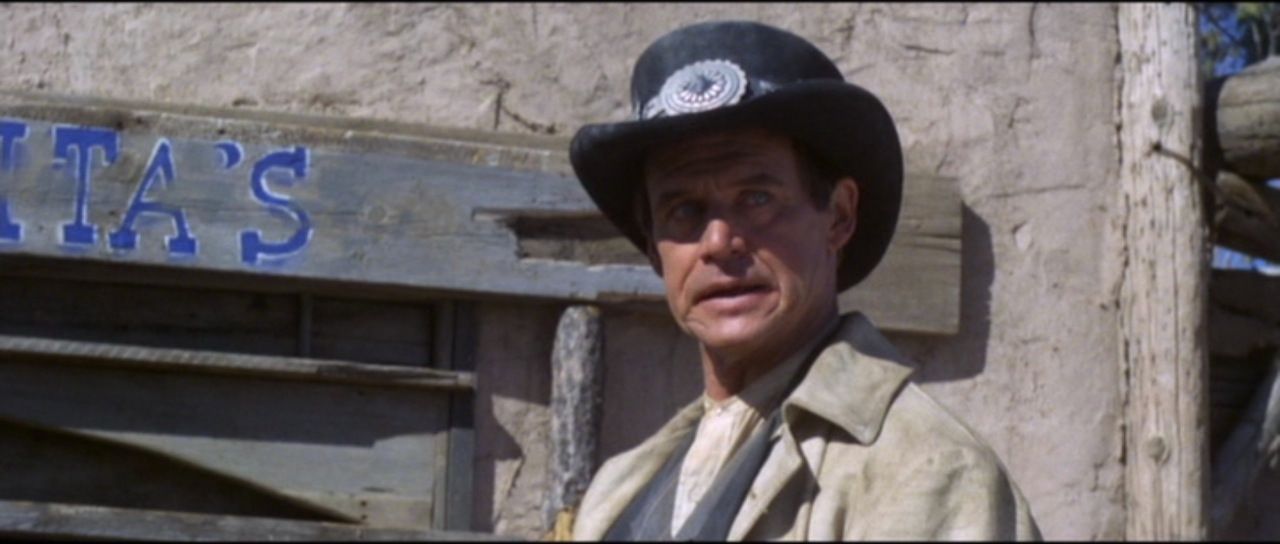
The transfer is very good: it’s natural and filmlike.
Audio
Audio is presented by two-channel stereo track. This is clear and free from issues. Sadly, there are no subtitles.
Extras
The sole extra is the film’s trailer (2:26).
Overall
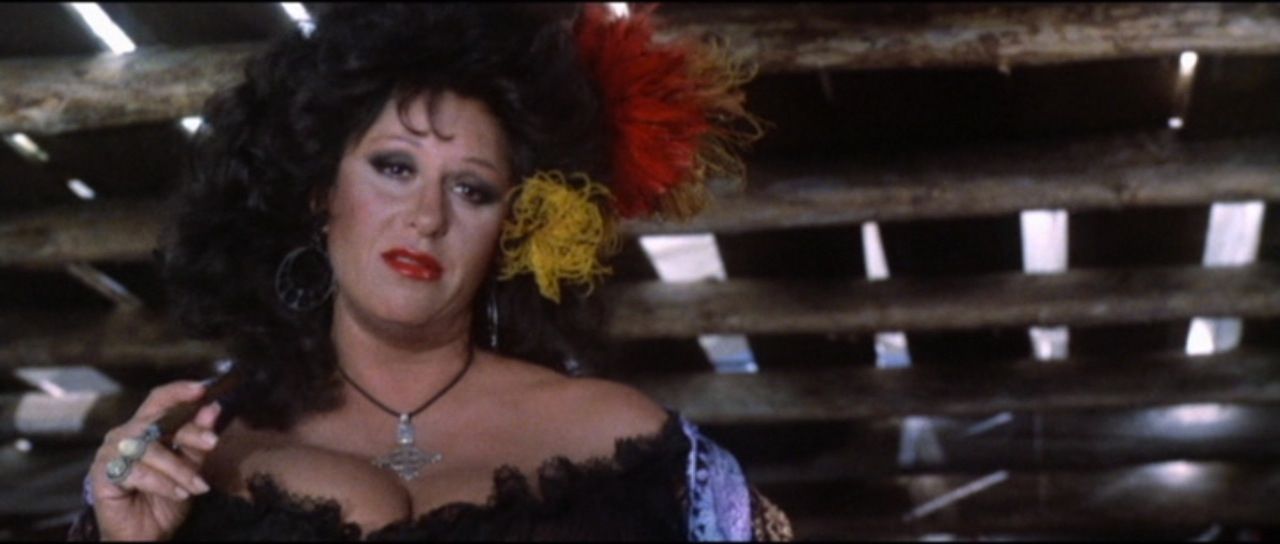 Ads for the film’s release on VHS in the US boasted, ‘When the raunchy meet the paunchy’, and this is perhaps a fair summation of Lust in the Dust. As noted above, and in keeping with Bartel’s other work (Private Parts, 1972; Eating Raoul, 1982), it’s essentially a bedroom farce that uses the iconography of the Western. It’s approach is largely scattershot, and whilst many of the jokes hit their respective targets, there’s a slightly unsettling dimension to the film’s depiction of sexual violence – which, were it not for the casting of Divine as Rosie Velez (and the part was apparently originally written for a female actor), may otherwise have appeared in poor taste. The film is certainly ruder and cruder than, say, Mel Brooks’ Blazing Saddles (1974) – although it’s much less focused than Brooks’ film. Ultimately, Lust in the Dust is an amusing film; and the presentation on this DVD is very good. Ads for the film’s release on VHS in the US boasted, ‘When the raunchy meet the paunchy’, and this is perhaps a fair summation of Lust in the Dust. As noted above, and in keeping with Bartel’s other work (Private Parts, 1972; Eating Raoul, 1982), it’s essentially a bedroom farce that uses the iconography of the Western. It’s approach is largely scattershot, and whilst many of the jokes hit their respective targets, there’s a slightly unsettling dimension to the film’s depiction of sexual violence – which, were it not for the casting of Divine as Rosie Velez (and the part was apparently originally written for a female actor), may otherwise have appeared in poor taste. The film is certainly ruder and cruder than, say, Mel Brooks’ Blazing Saddles (1974) – although it’s much less focused than Brooks’ film. Ultimately, Lust in the Dust is an amusing film; and the presentation on this DVD is very good.
References: Picano, Felice, 2005: ‘Tab talks’. The Advocate: The National Gay and Lesbian Newsmagazine (1 September, 2005): 70-81
|
|||||

|